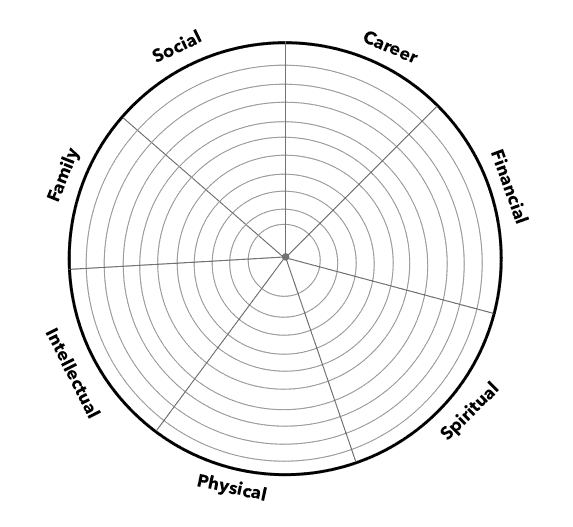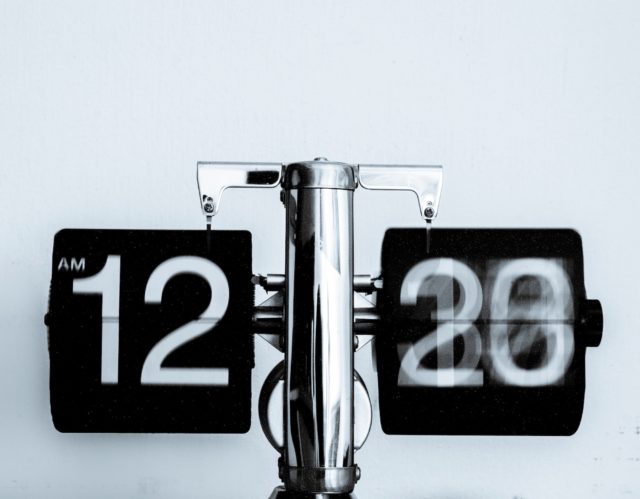
Some things in life require balance to be successful.
I remember the first time I went skiing. I was amazed at how easy it was to fall down. It was like forgetting how to walk. I had a similar experience learning how to ice skate. It is not as if the actual movements are too difficult. You know how to perform the simple function of moving your feet and shifting your weight. So why is it so hard? The challenge is finding the proper balance.
Balance can be elusive. It is true in many areas including finding balance in work and life. The danger for most professionals is being permanently “at work”. According to the Cambridge dictionary, work-life balance can be defined as the amount of time you spend doing your job compared with the amount of time you spend with your family and doing things you enjoy. With the right work-life balance, you are healthy and productive. Without balance it becomes very easy to feel overwhelmed.
Finding work-life balance is important because there is a lot at stake. The lack of balance can have serious negative consequences. For example, being out of balance can cause stress which can take a toll on your physical health. Self-care and significant relationships might be strained. Of course, personal and professional productivity suffer when there is no work-life balance.
Feeling Overwhelmed By a Lack of Work-Life Balance
Paul Jarvis, bestselling author of Company of One: Why Staying Small Is the Next Big Thing for Business, said, “I’ve always wanted a business that supports my life, not a life that supports my business.” People and things are regularly competing for your time. The goal of work-life balance is to find time in your days and weeks for everything that is important to your personal and professional life. In this article, we will share with you how to find balance, make the best use of your time, and win in work and life.
What Causes Overwhelm?
1. Too much complexity
According to research presented in Harvard Business Review, too many demands on our thinking over an extended period of time can result in cognitive fatigue. The mind’s ability to focus is diminished. When your mind is trying to manage too many responsibilities at the same time, the overload causes a sensation of overwhelm. What you need is clarity and focus to create work-life balance.
Clarify Top Priorities

When a plane is landing at night there are lights on the runway that guide the plane towards a safe landing. The lights define the path to success. Priorities do the same thing for busy professionals. Clear priorities define the path for the best use of your time.
Priorities supply two important pieces of information that multiply your effectiveness and provide relief from overwhelm.
- Priorities tell you what to do first. Author and respected productivity authority Stephen R. Covey said, “If the ladder is not leaning against the right wall, every step we take just gets us to the wrong place faster.” Knowing your priorities will help you use your time to move in the right direction and reach your goals.
- Priorities tell you what to not do at all. When you feel overwhelmed, there is a good chance the reason is because you are doing too many things. One of the ways to find work-life balance is to eliminate the unnecessary.
Once a pilot sees the lights on the runway, they use their controls to guide the plane to a safe landing. Use your priorities as a guide and take control of your task manager. Review your current responsibilities. Do you best to recognize the source of overwhelm. If possible, delegate those tasks or eliminate them.
2. Finding your identity in your work life
It is hard to disconnect from over-working if you find your identity in your role at work. The simple revelation that you are not your work is liberating. An article published by Psychology Today states that it is important to “separate the idea of meaningful work from a meaningful life.”
The rationale is that if one works more hours with a relentless commitment to their job above all else, then they will achieve success. However, research shows that when you are overwhelmed, you are actually less productive. Meaningful work is only one part of a well-rounded life. Work-life balance includes significant relationships, proper self-care, and pursuits outside of work.
Finding Balance
Identify the reasons you don’t have work-life balance
First you have to know what it is you are trying to balance. What is important to you in work and life? It is worth the time and effort it takes to get clarity on what you really want. The only way you can make time for what is most important is to know what is most important.
James Clear, best-selling author of Atomic Habits: An Easy & Proven Way to Build Good Habits & Break Bad Ones, wrote about how he spent a few weeks working to make sure he knew his true purpose. He would wake up each day and write. He started with a blank page. Each morning he would answer a simple question (in writing), “What do I actually want?”
Knowing who you want to be and what you want to do with your life makes it possible to evaluate your progress. How do you if today was a good day or a bad day? The answer is based on your personal values, vision, and goals. For example, I am a writer. My professional goal is to write 3 hours per day. If I do that, then I can consider myself successful in that area of my life. If for some reason, I go an entire week without a dedicated writing session, then I know something is wrong. I am getting off track on my work-life balance.
Domains of Life
Author, speaker, and entrepreneur Michael Hyatt often speaks about what he calls the double win: win at work and succeed at life. He is a strong proponent of work-life balance. One of the ways he recommends to achieve it is by assessing your health in 10 distinct domains of life. They are physical, vocational, avocational, emotional, financial, spiritual, parental, marital, social, and intellectual. When you know what you want in each area of life, you can chart the course towards a balanced professional and personal life.
Wheel of Life
Another helpful framework for evaluating work-life balance is called the wheel of life. The wheel of life in its current form was made popular by well-known author and motivational speaker Zig Ziglar.
History of the Wheel of Life from Entre Leadership
The idea of the wheel of life is thousands of years old. It’s used in Buddhist teachings and represents areas of the universe. In the 1960s, Paul J. Meyer, founder of Success Motivation Institute, created a tool using the idea of the wheel. It’s a visual representation of all the areas of your life where you need to set goals, laid out in spokes of a wheel. But the wheel really came into prominence when motivational speaker Zig Ziglar adopted it and chose seven areas of focus. His categories have become the gold standard, which many people and businesses still use today.

The Seven Categories of the Wheel of Life
- Career: Advancing your career or business objectives
- Financial: Taking control of or improving your finances
- Spiritual: Growing your spirituality
- Physical: Improving your health and well-being
- Intellectual: Developing your mind
- Family: Strengthening your family
- Social: Nurturing personal and professional relationships
Improve Time Management
In the case of work-life balance, it depends on the best use of your time while you are working and how you manage your time outside of work.
Finding Balance at Work

How do you measure your effectiveness at work? Don’t make the mistake of equating activity with accomplishment. There are some activities that can consume an enormous amount of time, but it does not mean it is a productive use of your time. Some of the more common culprits are email, meetings, and interruptions.
- Work Emails. How many emails you answer per week is not an indicator of productivity. According to research, time wasted with unnecessary emails costs an estimated $ 1,800 per year.
- Meetings. What about unnecessary meetings? How many meetings do you attend each week that take time away from doing actual work?
- Interruptions. No one asks to be interrupted. Interruptions cost both time and money. The average employee deals with more than fifty interruptions every day and spends more than two hours recovering focus.
It is clear that all activity is not productive. Time spent working on your top priorities is the best measurement for a productive day. Having clear priorities gives you the knowledge you need to evaluate how you spend your time.
You may be familiar with the Pareto Principle which states that for many outcomes roughly 80% of consequences come from 20% of the causes. You get eighty percent of your results from about twenty percent of your activity. Overwhelm happens when you lose focus on the twenty percent of your activity that produces results.
Finding balance outside of work
Make time for what is most important outside of work. Your physical, emotional, and mental health all part of a balanced life. Here are some recommendations:
- Sleep is essential to health and productivity. A good night’s sleep can multiply your effectiveness.
- Relax. Your brain and body need time to recharge.
- Detach. Being away from work means being away from work. The world we live in today is hyperconnected. For people who own a mobile device (phone, tablet, or laptop), it might seem impossible to escape. Your work is always with you. However, doing something as basic as silencing the notifications on your devices outside of work hours can make a big difference.
- No. Learn to say “No” more often. Most people do not say “no” enough. However, without personal boundaries, you will live in a perpetual state of overwhelm.
3 Decisions To Implement Work-Life Balance
Realize that your day is not going to balance itself. It only happens as the result of your intentional choices. You have to plan the day you want to live.
1. Do an honest review of your time
Time is a finite resource. Be honest with yourself about how you are spending it.
Start with your calendar
Imagine visiting a grocery store. Suppose you have a budget for a specific amount of money. You add up the total cost of all the items in your cart until you reach the limit. At that point, if you want to put something else in the cart you must remove something. Your calendar is your shopping cart. It represents your time. Each day has 24 hours. Every activity has a cost of time. It is a limited resource. You have to be intentional about your activities. Make sure there is time on your calendar for important events like a vacation and small daily activities like meditation and reflection for your mental health.
2. Establish Healthy Boundaries For Your Work and Personal Life
Boundaries are helpful because they force you to use your time in the most productive way possible. Anyone who travels by plane knows that you have to be on board when it takes off. There is a boundary because a traveler must arrive on time for departure.
Signals that you have crossed a boundary
- Ask yourself, “Is what I am doing sustainable?” If you continue to work the way did today, would you be able to maintain that pace indefinitely?
- You stopped doing something important to you because you did not have time to do it.
- You no longer exercise
- You are not sleeping well over an extended amount of time
3. Implement Healthy Habits to Make Sure You Stay on Track
Your habits protect your boundaries. Self-discipline is a choice you make, but it is reinforced by the power of healthy habits.
A Harvard Business Review article suggests “that this is not a one-time fix, but rather, a cycle that we must engage in continuously as our circumstances and priorities evolve.”
The right framework will allow you to confront changes. Life is not static. It is constantly changing. That means that means that work-life balance is a moving target.
Examples of habits for balance in the home and at the office
- Developing a morning ritual
- Commit to stopping work at a specific time
- Make a regular appointment on your calendar for self-care
Tips To Get Started
Look at your calendar for tomorrow. Plan what time you will stop working for the day. Choose an activity that is related to your life outside of work, and block that time on your calendar. It is a simple step, but you can implement it immediately. Small daily choices that become healthy habits will help you achieve better work-life balance.
